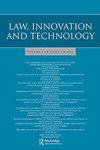2D监管环境中的3D生物打印:差距、不确定性和问题
Q1 Social Sciences
引用次数: 14
摘要
摘要在本文中,我们评估了3D生物打印治理监管格局的事前和事后维度。前者主要关注3D生物打印的市场批准和安全性,后者则关注一旦生物打印获得许可或授权使用后的责任问题。在这个2D景观中,我们强调了三组选择:监管是否应该关注过程、产品或两者;是依赖现有制度,还是创建一个新的定制和独特的监管框架;以及是否采用自上而下、自下而上或共同监管。我们发现了一系列解释上的不确定性以及现行法律制度中的空白。我们考虑了一种初步的临时“基于过程”的方法和生物打印治理的共同监管模式。我们预计,对监管格局的研究将提供与其他类型生物制造相关的关键见解。本文章由计算机程序翻译,如有差异,请以英文原文为准。
3D bioprinting in a 2D regulatory landscape: gaps, uncertainties, and problems
ABSTRACT In this paper we assess both the ex ante and the ex post dimensions of the regulatory landscape of 3D bioprinting governance. While the former is mainly concerned with the market approval and safety of 3D bioprinting, the latter is concerned with the matter of liability once bioprinting has been licensed or authorised for use. In this 2D landscape, we highlight three sets of choices: whether regulation should focus on the process, the product or both; whether to rely on existing regimes or create a new bespoke and distinct regulatory framework; and whether to employ top down, bottom up, or co-regulation. We identify a series of interpretative uncertainties as well as gaps in the current legal regimes. We consider an initial provisional ‘process-based’ approach and a co-regulation model for bioprinting governance. We anticipate that the study of the regulatory landscape will offer key insights in relation to other types of biofabrication.
求助全文
通过发布文献求助,成功后即可免费获取论文全文。
去求助
来源期刊

Law, Innovation and Technology
Social Sciences-Law
CiteScore
4.50
自引率
0.00%
发文量
18
期刊介绍:
Stem cell research, cloning, GMOs ... How do regulations affect such emerging technologies? What impact do new technologies have on law? And can we rely on technology itself as a regulatory tool? The meeting of law and technology is rapidly becoming an increasingly significant (and controversial) topic. Law, Innovation and Technology is, however, the only journal to engage fully with it, setting an innovative and distinctive agenda for lawyers, ethicists and policy makers. Spanning ICTs, biotechnologies, nanotechnologies, neurotechnologies, robotics and AI, it offers a unique forum for the highest level of reflection on this essential area.
 求助内容:
求助内容: 应助结果提醒方式:
应助结果提醒方式:


